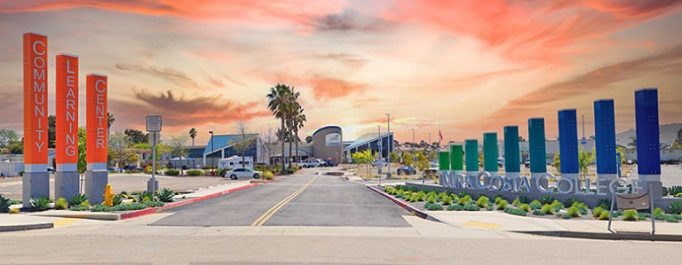Building a futures mindset
By Tabitha Whissemore
December 8, 2021
A California college creates a futures community
Predicting the future doesn’t require a crystal ball. By looking for signals and disruptors – and using some creative thinking – MiraCosta College is building a futures framework to shape the next 15 years and beyond.
The California college is working to train staff, students and board members to think like futurists.
The college’s core mission is to provide equitable student success. It’s already a leader in racial justice and equity, according to Superintendent/President Sunita Cooke, but traditional thinking won’t be enough to close the equity gap.
“Our institutions, communities and world have shifted,” says Cooke, who also serves on the American Association of Community Colleges board of directors. “We have to make sure we’re thinking ahead.”
How it started
In 2015, Cooke led a state taskforce focused on re-envisioning and reinvesting in workforce development. The group included stakeholders from the California community college system and external members. Their work was impacted by the Institute for the Future (IFTF), which has collaborated with the system to help map ways to support working learners.
That work of looking to the future stuck with Cooke. Some members of the MiraCosta board of trustees were thinking about the future, too.
“A couple of us on the board had worked in the business world, and we’d seen what happened when disruptive changes come into the business world. Businesses close, basically,” says board member David Broad. “We were seeing things were happening in our world, and we needed a framework to think about it.”
Cooke brought in Parminder Jassal to lead a workshop about futures thinking with the college community and board of trustees. Jassal has worked with IFTF as the founder of its Work + Learn Futures Lab and she created SocialTech.ai, which supports working learners by embracing novel technologies and approaches. She is now CEO of Unmudl, which connects community college students to employers.
Futures thinking isn’t typical in the United States, says Jassal. While China plans about 200 years out, and Europe typically thinks about 75 years into the future, the U.S. often just looks 10 to 30 years into the future.
“A lot of organizations put futures thinking off to the side,” Jassal says.
U.S. businesses are embracing it more, but that work doesn’t always filter through an organization, she adds.
Creating a futures community
That’s what MiraCosta College is hoping to avoid.
Since that workshop with Jassal, the college has been working to create a futures community — both within the college community and the community it serves.
The work began in earnest in 2020 with sessions that introduced a small group of people to exercises and tools used to build a futures mindset. That early work focused on training about a dozen futures facilitators – including some board members – who could help with the second phase, which involves building a futures community with 50 people across the college community, including staff, faculty and students. Broad was part of that early work. He embraces this new way of thinking about long-term planning.
“Academic institutions do not change rapidly, has been my experience. There’s a lot of changes going on in the world,” such as technology, expectations of students, potential competition and a focus on accountability and outcomes, Broad says. “It sets the mindset of the college of not accepting the status quo.”
During the trainings, the futures facilitators learned to think less about trends, which is common in long-term planning, and think instead about disruptors or signals – “things that could really change your world,” Broad says.
He gives an example: “What would happen if Uber happened to colleges? People are used to picking and choosing things to suit them, individually tailored things. You start to think about that and how you’d deal with that.”
There’s also a good amount of creative thinking involved.
“If there wasn’t creative thinking, it would all be quantified,” Jassal says. “If it’s all quantified, it’s not thinking about the future.”
Broad admits there was some skepticism about the work, but, as the second phase began this fall with the cohort of 50, “there’s genuine excitement.”
Gaining foresight
Luke Lara is a counselor at the college and president of the academic senate. He has been participating in the twice-monthly workshops this fall.
“I didn’t know much about futures thinking and this mindset. My first reaction was, ‘this is scary,’” he admits.
Participants heard from experts who had done futures work in various fields. They were given exercises, such as thinking about their past self and their future self. They were given scenarios to think about and develop future headlines that would accompany such incidents.
“We had to think of a scenario and give it detail,” Lara says. “It’s about getting foresight into what could be.”
They also learned how to spot signals. One of the signals was the ungrading movement, which puts aside traditional letter grades and instead involves actionable feedback. The Duolingo app, for example, does just that.
Another tool is the two curves framework, which shows where disruption is likely to happen, such as when changes in technology and behavior coincide.
That all works together to help strategize for the futures. That’s futures, plural, because “it’s not about guessing what one future might be,” Lara says.
Jassal adds that planning for futures means you can “land on the preferred future and plan for alternative futures.”
The third phase will begin at MiraCosta College in the spring. That will involve applying the tools and information learned in developing and updating several of the college’s plans, such as the educational, equity, facilities and technology masterplans.
What’s next? Read the full article in CC Daily.


